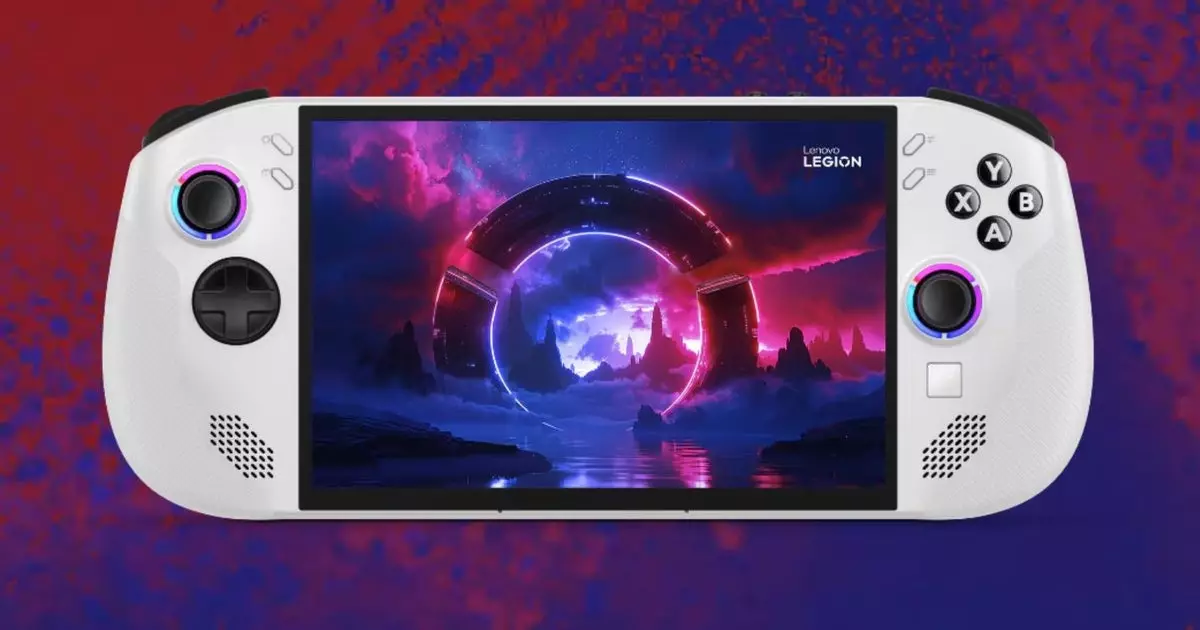The world of portable gaming has seen a surge in innovation over the past few years, and Lenovo is positioning itself with the new Legion Go S—a device designed to fill the niche outside the established giants like the Steam Deck. While it departs from the unique detachable controller design of its predecessor, the Legion Go S introduces a compelling mix of affordability and functionality that could resonate with gamers looking for a handheld experience.
One of the standout features of the Legion Go S is its reimagined form factor. Rather than continuing with the bulky construct of the original Legion Go, Lenovo opted for a streamlined approach by incorporating a fixed chassis. This transformation is not merely aesthetic; it translates into a significant reduction in weight, shedding almost 124 grams to reach a more manageable 730 grams. Alongside this weight reduction, the Legion Go S downsizes its screen from nearly 9 inches to a more practical 8-inch display. This 1200p, 120Hz IPS panel strikes a balance between quality and performance, addressing previous criticisms regarding the original’s expansive screen, which strained the processing capabilities.
A significant decision made by Lenovo is its choice of operating system. The Legion Go S is set to be the first handheld gaming device officially licensed to run SteamOS, a major departure from the widely adopted Windows 11. This choice could potentially reposition the Legion Go S as a more viable handheld option, as SteamOS is tailored for gaming experiences, especially on devices with smaller screens. Users can look forward to an improved user experience, alongside the flexibility of a desktop mode for those who may want to perform non-gaming tasks.
Powering the Legion Go S will be a choice between two AMD processors: the familiar Ryzen Z1 Extreme, which served in the original Legion Go, and the newer Ryzen Z2 Go. While there is speculation regarding the performance differences—primarily that the Z2 Go may not reach the same heights as the Z1 Extreme—Lenovo has strategically set the price point to entice buyers. The Legion Go S starts at $599 for the Z2 Go variant, while the Z1 Extreme version tips the scales at $729. Regardless of the option selected, the performance benchmarks will ultimately dictate the device’s standing in the highly competitive landscape of portable gaming.
Beyond raw specifications, Lenovo’s emphasis on user experience shines through in the tireless enhancements made across the board. The device boasts Hall Effect joysticks, designed to improve durability, and a minor trackpad that, while compact, may serve as a navigation aid rather than a full-fledged gaming interface. Another noteworthy inclusion is a 55Whr battery, which brings an increase of 5WHr compared to its predecessor. Given that battery life has often been a weak link among handheld consoles, this boost could translate into a more sustained gaming experience for on-the-go enthusiasts.
In an ever-growing market, the Legion Go S has a rather tall order ahead of it. The price of $599 for a model with 1TB of storage places it squarely in competition with the Steam Deck OLED, which retails for $649. However, while the Steam Deck may boast more familiarity among gamers, the Legion Go S has the opportunity to establish its own identity thanks to SteamOS and its customer-centric design tweaks. That said, Lenovo will need to address concerns about performance and battery life decisively to carve out its niche in this segment.
The Lenovo Legion Go S presents a fascinating new entry in the portable gaming space. With its thoughtful design, a switch to SteamOS, varied performance options, and competitive pricing, it opens the door for a diverse range of gamers. The challenge now lies in execution—ensuring that the device lives up to its promise and can stand the test of time amidst a sea of alternatives. The excitement for this upcoming launch is palpable, and the gaming community eagerly waits to see how it performs.

